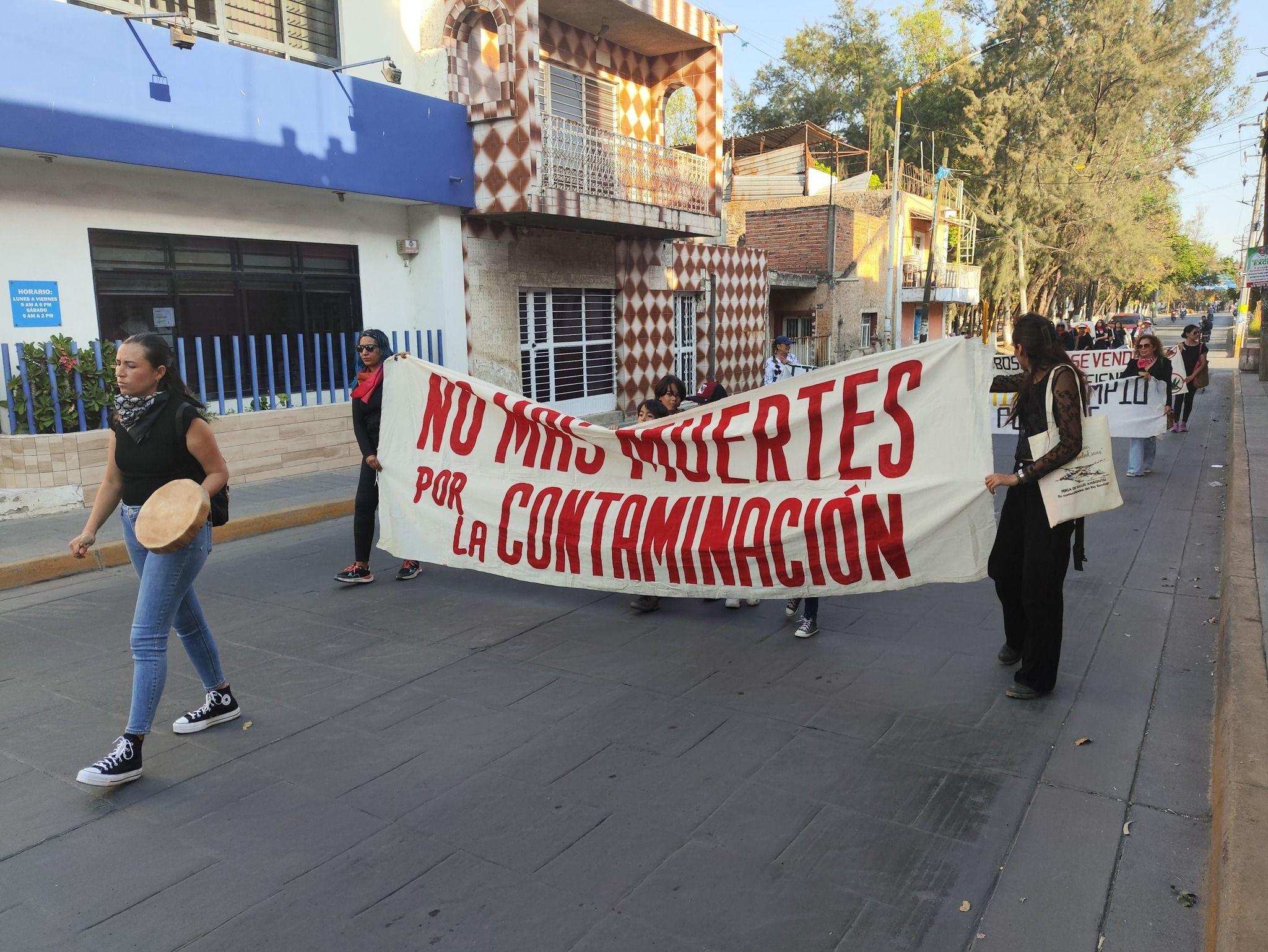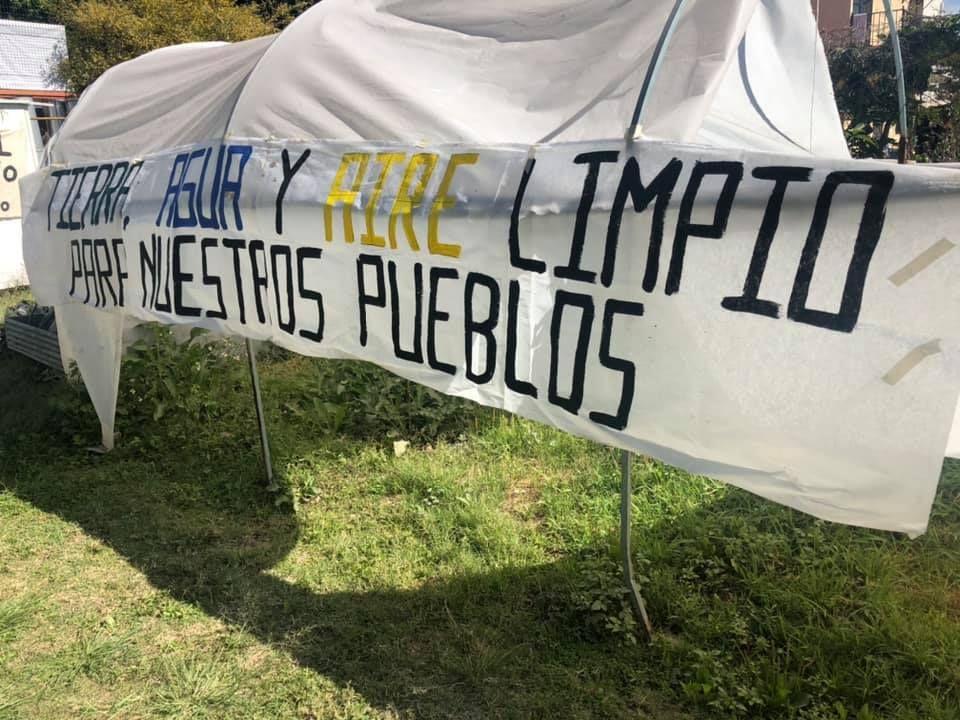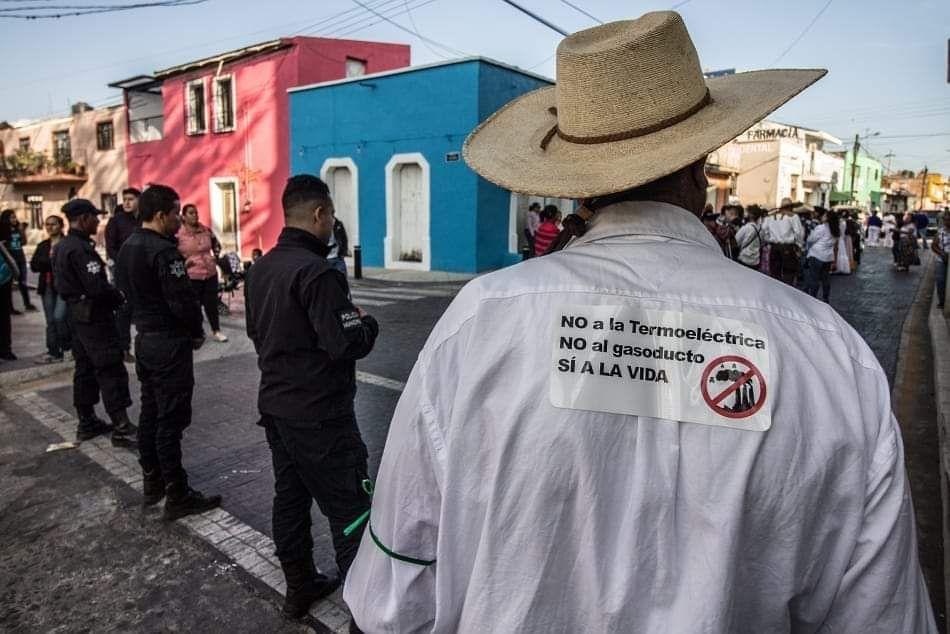Enrique Enciso says that to visit an apocalyptic place you have to travel to El Salto, in Jalisco. What was once the town located on the banks of the great Santiago River, one of the largest in Mexico, has become another contaminated site as a result of the industrial corridor located in this region.
“People would need a lot of imagination to even think about what El Salto was like before. Environmental hells are industrial paradises,” says Enciso, a resident of the municipality and member of the collective Un Salto de Vida A.C.
The pollution of the Santiago River has been reported for almost 50 years. The climax occurred in the 90s, with the entry of the energy industry through projects such as the Petroleos Mexicanos (Pemex) thermoelectric plants. This led to the installation of gas pipelines, which are large underground pipes that transport fuels such as gasoline and natural gas, throughout the territory.
Just as a car needs a gas station to fill fuel, thermoelectric plants need a network of gas pipelines to operate. In the case of natural gas, the most used for electricity generation in Mexico, the need to expand the grid to reach regions with industrial potential has been documented. However, what is a necessity for the energy and economic sector, is an environmental and health problem for towns like El Salto, where this activity takes place.
“For us, putting a pipe in this area means that there will be industrialization, the movement of fuels and much more. The peoples are no longer resisting. As the boys say: these are areas of sacrifice,” Enciso points out.

This year, residents and environmental defense groups in Jalisco staged protests after Emilia Esther Calleja Alor, director of the Federal Electricity Commission (CFE), announced at a morning conference that a combined-cycle thermoelectric plant was planned in Jalisco.
This raised suspicions about a possible reactivation of the “La Charrería” thermoelectric plant, in Juanacatlán, a neighboring municipality of El Salto, canceled since 2019 for reasons of environmental impact. According to the project's Environmental Impact Statement (MIA), the plant would be supplied with natural gas from the Salamanca - Guadalajara gas pipeline.
In response to the demonstrations, the government reported that the thermoelectric plant will not be built in Juanacatlán, although the installation of the project was not denied either.
Meanwhile, the federal government, headed by President Claudia Sheinbaum, presented Plan Mexico, which contemplates reducing the import of natural gas from the United States, but increasing domestic production of other fossil fuels such as gasoline, diesel and turbines by 30%.
“The big dilemma is that people pay for it with their lives. People have had 20 years taken from them, people die too soon,” Enciso denounces.
El Grande de la Electricidad
Since 2014, natural gas has been the most consumed fuel in Mexico. It is estimated that it contributes to the generation of 60% of electricity. For the most part, imported from the United States, the only supplier since 2020 due to the low cost.
Although natural gas has been promoted as an environmentally friendly option in Mexico, it is a fossil fuel that generates greenhouse gas emissions and methane leaks that affect air quality.
“The impacts range from exploration, extraction, extraction techniques, and the entire midstream of transportation and supply,” explains Carla Flores, a researcher at CartoCrítica, a civil organization that specializes in georeferenced socio-environmental information.
Natural gas imported from the United States originates in Texas from fracking, a technique that involves breaking up rock bodies injected with water under high pressure, among other chemicals.
In several countries, it has been demonstrated that to fracture a well, between 9 and 29 thousand cubic meters of water are required, equivalent to between two and seven Olympic swimming pools. In Texas, the effects are reflected in water pollution and the increase in earthquakes.
“Fracking is a more developed technique in the United States, it takes a long time and is widespread, making its gas cheaper. So it's easier for Mexico to import the gas obtained by fracking than to do it here,” says Flores.
In Mexico, fracking is practiced in states such as Puebla, Veracruz and Tamaulipas. Throughout the previous six-year term, former president Andrés Manuel López Obrador said that wells would not continue to be explored for this practice, however, the prohibition decree promoted by groups and organized civil society such as the Mexican Alliance Against Fracking was never approved.

Once natural gas is generated by fracking in the United States, it is distributed in the gas pipeline network known as Wahalajara, which connects downtown Waha, in West Texas, to Guadalajara. The installation of this network has caused mobilizations between the communities through which the route was traced.
“We were opposed because of the environmental fragility that already exists in the area. We see that growth adapts to the needs of the industry to remain in this region... The power they want to give to Plan Mexico and everything that comes with infrastructure for the west of the country creates the conditions for industrial expansion,” says Sofía Enciso González, a member of Un Salto de Vida A.C.
The organization has mapped how gas pipeline systems are linked to industrial projects, mainly energy projects. To the east of El Salto and Juanacatlán, there is also the “Tierra Mojada” combined cycle thermoelectric plant, built in the municipality of Zapotlanejo, which has been operating since 2019.
“For us it is a risky problem because the living conditions of populations are violated. All the accumulation of pollutants that has been generated over the last 50 years on our territories, which now affects our health and our daily lives, strengthens life itself. That's why we're opposed, that's why we denounce the existence of these megaprojects in our territories,” says Enciso González.

Less life
Currently, the damage caused by industry in the region has been studied by researchers and civil society organizations, mainly in the Santiago River, which has been declared an environmental emergency zone. Even the federal government has recognized the vulnerability to which surrounding communities are exposed.
“The municipality of El Salto, in the state of Jalisco, suffers severe environmental impacts affecting air quality and its natural assets with metals such as ammonia, sulfur dioxide, aldehydes, among others; which are dumped and dispersed with impunity by companies established in the industrial corridor that goes from the municipality of Ocotlán, to the Metropolitan Area of Guadalajara,” said the National Institute of Ecology and Climate Change (INECC) in 2023.
Regarding the extraction of natural gas, a CartoCrítica study focused on fetal development evidenced the malformations of the digestive system with which sons and daughters are born to mothers exposed to gas wells in northern Mexico.
“It's a health hazard that has been documented in the United States and what we did was replicate this methodology in the Burgos Basin in Tamaulipas, specifically there because there is gas extraction,” explains researcher Flores.
Now that the plan of the new federal administration plans to continue the production of hydrocarbons, environmental defenders and specialists question the role of the energy transition.
“It's not just about changing the energy source, but about structurally reducing demand, prioritizing efficiency, building a just transition that puts ecosystem life and human rights at the center because in these energy transition narratives it seems that we only want to change technology and the origin of the resource,” Flores adds.

Enrique Enciso says that the Santiago River was formerly known as Chignahuapan, a word in Nahuatl that means “power of nine rivers” due to the extension of its flow. Today, it has decreased due to pollution. Its grandeur is a memory of the older inhabitants.
“The State presumes that it makes millions of dollars in investments for its remediation, but it cannot be (remedied) because they have not given the conditions to the river,” says Enciso.
Currently, the requests of the group A Leap of Life are for the restoration and recovery of the Santiago River, its tributaries, wetlands and streams, as well as the implementation of a care plan for health damage and an industrial ban.
“For us who have always lived here, the answers to pollution must come from those who received the blows because not only have they destroyed our territories, but they have stolen our imagination, they have stolen our dreams. What I'm saying is that there can be no remediation without rehistorization,” Enciso concludes.






Comentarios (0)